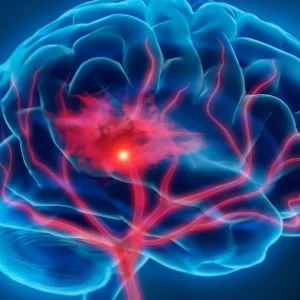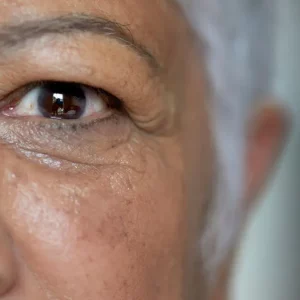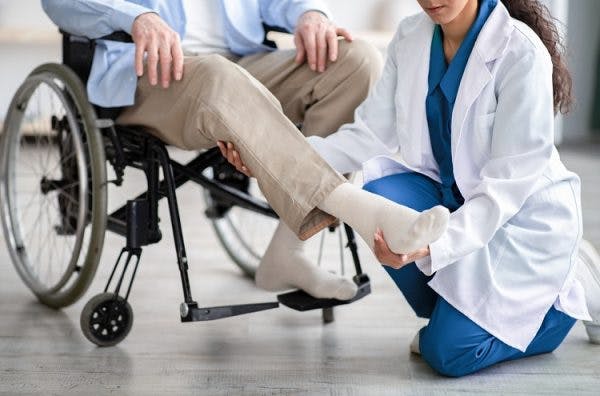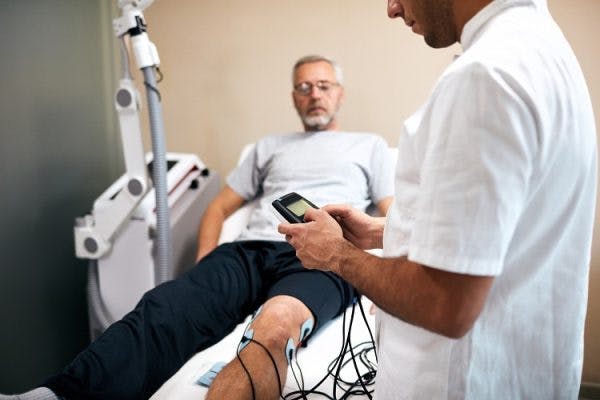Knowing the best foods that help stroke recovery can help you create a diet rich in brain-healthy foods. For some guidance, we’ve composed a list of food for stroke patients that provide a variety of benefits, all backed by clinical evidence. There are also lots of fruits on the list because they are rich sources of antioxidants and flavonoids, which are great for stroke recovery.
Before we dive in, it’s worth mentioning that while many foods are helpful, certain foods can exacerbate pre-existing conditions such as high cholesterol or high blood pressure. Therefore, it’s essential to consult with your doctor or dietitian before making any changes to your diet after a stroke.
You’re about to discover the best foods and diets for stroke patients. Use the links below to jump straight to any section:
- Maintaining a healthy diet during stroke recovery
- The best foods for stroke recovery
- Top fruits for stroke patients
- Foods for stroke patients with high blood pressure
- Foods to avoid during stroke recovery
- The best diet for stroke patients
Maintaining a Healthy Diet During Stroke Recovery
The best foods that help stroke recovery are foods that promote Brain-Derived Neurotrophic Factor (BDNF). BDNF is a protein that supports the growth of new brain cells (neurons) and promotes neuronal connections within the brain. This is critical for the process of neuroplasticity, the brain’s ability to rewire itself after sustaining an injury, like a stroke.
Neuroplasticity helps you recover lost skills after stroke and is best activated by exercise and massed practice, which is why your therapists ask you to perform highly repetitive rehab exercises. While neuroplasticity is activated by consistent practice, eating foods that boost the production of BDNF can also enhance the effects of neuroplasticity.
Again, it is important to always check with your dietitian or doctor before making any changes to your diet. They can help ensure you’re not exacerbating any preexisting medical conditions or stroke risk factors like high blood pressure.
Up next, you’ll discover a list of foods for stroke patients that can help boost recovery, according to the latest clinical research.
15 Best Foods that Help Stroke Recovery
Along with foods that increase BDNF levels, the best foods for stroke recovery are rich in brain-boosting vitamins and minerals. It’s ideal to get your nutrients from your diet whenever possible, and use supplements (that your doctor has approved) to fill in the gaps. Below you’ll discover a healthy list of foods for stroke patients, along with the nutrients they provide.
Here are 15 of the healthiest foods that help stroke recovery:
1. Salmon (EPA)
Omega-3 fatty acids help maintain brain-derived neurotrophic factor levels and promote neuroplasticity. Fatty fish like salmon contain an omega-3 fatty acid called EPA. While the body produces some EPA on its own, increasing EPA can help during stroke recovery. In fact, it is one of the top vitamins for stroke patients that can be consumed naturally through your diet.
2. Flaxseeds (Alpha-Linolenic Acid)
Flaxseeds are a great source of alpha-linolenic acid (ALA), which is an omega-3 fatty acid that can only be obtained through the diet since your body cannot produce ALA on its own. A recent study highlighted that ALA boosts brain-derived neurotrophic factor, neuroprotection, and neuroplasticity. This is critical for stroke patients who are at a higher risk of having another stroke.
3. Nuts and Seeds (Vitamin E)
Nuts and seeds are a good source of vitamin E, which is associated with lowering the risk of cognitive decline with age. Vitamin E is also beneficial for stroke recovery because of its antioxidant properties that protect the cells from free radical damage. Vitamin E also helps improve cognitive function.
4. Avocados (Oleic Acid)
The areas in your brain responsible for processing information rely on oleic acid to perform at optimal speed. This is an ideal nutrient to include in your diet after a stroke, especially if you struggle with cognitive difficulties.
One food that is rich in oleic acid are avocados, which are also a great source of antioxidants. Studies showed that the unique antioxidants in avocados may also be effective neuroprotective agents. Try adding a quarter of an avocado to your sandwich, salad, or smoothie.
5. Eggs
Eggs are a beneficial source of protein for stroke patients. Eggs are soft and can be cooked in many ways, allowing them to be easily eaten by those who have difficulties with swallowing (dysphagia) after stroke. Additionally, eating eggs can help prevent another stroke from occurring, according to a study by the Journal of the American College of Nutrition. In fact, further research showed that eating one egg per day can help reduce the risk of stroke by 12%.
6. Olive Oil
Olive oil helps increase the amount of apolipoprotein in your body, which is a protein found in the blood. High amounts of this protein can help lower the risk of heart disease. Be careful not to overconsume olive oil just because it contains helpful nutrients for stroke recovery. But when appropriate, olive oil can make a great choice as a salad dressing or cooking ingredient.
7. Quinoa
Studies have shown that plant-based foods, such as whole grains, can lower the risk of stroke. A popular type of whole grain is quinoa. Quinoa is rich in fiber and contains all of the amino acids that are necessary to form a complete protein. Complete proteins are the proteins the body cannot produce on its own but need to repair cells and make new ones. Thus, quinoa easily makes this list of foods for stroke patients.
8. Greek Yogurt
Greek yogurt is a great source of calcium and protein. It can be included in your breakfast or as a snack option. Greek yogurt is also an excellent source of probiotics, which promote gut health and may also reduce future risk of stroke.
Furthermore, Greek yogurt is a softer food option for stroke patients who may experience difficulty chewing or swallowing. However, if you struggle with swallowing, it’s important to work closely with your Speech-Language Pathologist to create a safe list of foods that are appropriate for you to eat.
9. Green Tea
Caffeine is a frequently debated topic in the stroke rehabilitation field. Because caffeine causes a short term yet dramatic spike in blood pressure, it should be avoided if you have high blood pressure. This is a great example of why it’s important to talk to your doctor or dietitian before making any dietary changes.
For survivors that still desire caffeine, green tea is a healthy option due to its high antioxidant and flavonoid content. A study from the American Heart Association found that stroke survivors who drank several cups of green tea a day helped lower the risk of death by 62%.
10. Legumes
Undoubtedly vegetables are an essential part of a healthy, balanced diet. Legumes are a class of vegetables that are great during stroke recovery because they are excellent sources of potassium, iron, and protein.
Different types of legumes to include in your diet after a stroke include beans, lentils, and peas. Beans in particular are rich in magnesium which helps with neuroprotection. Legumes are also versatile and can be made into meatless burgers or be incorporated into soups and stews.
The Best Fruits for Stroke Patients
Fruits are some of the top foods for stroke recovery because they are rich in flavonoids and antioxidants. Flavonoids help reduce inflammation and ischemic damage after a stroke. They also help lower cholesterol and blood pressure, which is good news as high cholesterol and high blood pressure are two of the leading causes of stroke.
Antioxidants help reduce damage from free radicals, which are harmful compounds produced when the body breaks down food or caused by exposure to smoke and radiation. Because fruits are rich in both flavonoids and antioxidants, they are an excellent addition to a healthy diet after stroke.
Here are some of the best fruits for stroke patients, according to clinical evidence:
11. Blueberries (Flavonoids)
Berries in general are an easy addition to this list of foods for stroke patients. Blueberries in particular contain flavonoids that help boost the production of BDNF, thereby promoting neuroplasticity. Flavonoids have also been shown to lower cholesterol and help improve overall cognitive function and neurodegenerative diseases like Alzheimer’s.
12. Pomegranate (Antioxidants)
Pomegranates are another excellent fruit to enjoy during stroke recovery. They are high in potent antioxidants, which help protect the brain and body from the damage caused by free radicals. Furthermore, consuming fruits with antioxidants helps strengthen your immune system, making pomegranates a great addition to your list of foods for stroke recovery.
13. Citrus Fruits (Vitamin C)
Citrus fruits, such as oranges and grapefruit, are not only great sources of vitamin C but are also a great source of flavonoids. In fact, the flavonoid content found in citrus fruits helps protect brain cells, strengthen blood vessels, and reduce inflammation. Citrus fruits can also help reduce stiffness in the blood vessels, which can help lower the risk of stroke.
Grapefruit is among the top citrus fruits for stroke patients because of the predominant flavonoid known as naringenin. Naringenin can help improve neurological injuries, and has been found to be one of the most potent anti-inflammatory flavonoids.
14. Apples (Fiber)
You may have heard the popular saying “an apple a day keeps the doctor away” — and it’s true. Apples are rich in antioxidants and fiber, particularly pectin. Pectin is a highly soluble fiber that can help lower and maintain cholesterol levels. This aids in preventing plaque buildup and reducing the risk of stroke by keeping arteries clear of waste.
15. Tomatoes (Lycopene)
Lycopene is a plant-derived nutrient that provides neuroprotective benefits and can help lower the risk of stroke. There are many lycopene supplements, but it’s recommended to get your vitamins from your diet whenever possible. Fortunately, lycopene is readily available in tomatoes.
Tomatoes are a rich source of the antioxidants, making them a great part of a healthy diet for stroke patients. While tomatoes are versatile and can be added to your diet in various ways such in soups and casseroles, it’s important to be mindful of adding excessive salt to your dishes, especially if you have high blood pressure.
Food for Stroke Patients with High Blood Pressure
Pre-existing health conditions, such as high blood pressure, increase the risk of having a second stroke. Therefore, it’s important to be mindful of the foods you include in your diet to help manage blood pressure. It’s especially important for stroke patients to limit the consumption of certain foods that contain excessive salt and/or sugar.
Salt (sodium) can raise your blood pressure and increase your risk of stroke. The American Heart Association (AHA) recommends consuming no more than 2,300 mg of sodium per day. While this may seem like a large amount, it can quickly be consumed especially through canned soup and processed meats.
Sugar is another ingredient that stroke patients with high blood pressure should limit or avoid if possible. Excessive amounts of sugar can damage blood vessels and increase the risk of stroke. Excess sugar can also cause diabetes and weight gain, which is another stroke risk factor, therefore it’s crucial to limit high-sugar foods and drinks.
Additionally, some survivors may struggle cutting back on sugar after a stroke. Fortunately, there are various fruits that contain natural sugar that can help satisfy sweet cravings.
Alcohol is another type of drink that contributes to high blood pressure. Excessive drinking also increases a variety of stroke risk factors. Ask your doctor when it is safe for you to have an alcoholic beverage after a stroke and how much you are allowed to drink.
Avoid These Foods During Stroke Recovery
While not all stroke patients may struggle with high blood pressure, it’s essential for all survivors to avoid certain foods that can interfere with recovery. Studies have shown that saturated fats and excessive amounts of sugar can reduce the production of BDNF, neuroplasticity, and learning.
This means foods high in saturated fats and/or sugar can impact your brain’s ability to strengthen and create new neural pathways. Saturated fats, which are commonly found in fried foods and red meat, can also contribute to high cholesterol, which is a stroke risk factor. Therefore, it’s crucial to avoid eating saturated fats and find healthier alternatives such as fish, nuts, and avocados.
Now that you know the best foods that help stroke recovery and what foods to avoid, you may wonder, what is the best diet for stroke patients? Let’s take a look.
Want 20 pages of stroke recovery tips in an illustrated PDF? Download our free ebook by clicking here (link opens a pop up for uninterrupted reading)
What Is the Best Diet for Stroke Patients?
While the list of foods above provides many benefits, it’s important to create a diet that works best for you. Your doctor or dietitian can provide guidance on what foods to eat or avoid based on your unique medical history and any preexisting health conditions. They may also recommend starting with simple, heart-healthy diets.
For example, the Mediterranean Diet and the DASH Diet are two diets that have been found to protect against neurodegenerative diseases and other conditions such as stroke. The Mediterranean Diet is a primarily plant-based diet that encourages the consumption of healthy fats, such as fish and olive oil, as well as fruits, vegetables, and whole grains.
Another great diet for stroke patients is the Dietary Approaches to Stop Hypertension (DASH Diet). The DASH Diet focuses on managing dietary changes that are flexible and nutritious while staying within the daily recommended intake of sodium, which helps manage blood pressure. The Mediterranean Diet and the DASH Diet are ranked number 1 and 2 respectively by the U.S. & World Report as the best diets to engage in.
Finally, the Mediterranean-DASH Intervention for Neurodegenerative Delay, or MIND Diet, has also been clinically proven to improve stroke recovery. It’s a simple hybrid of the two diets that encourages the consumption of 10 food types (such as green vegetables, berries, and beans) and discourages 5 food varieties (such as margarine, cheese, and pastries). The MIND Diet also helps manage certain stroke risk factors such as atherosclerosis and obesity.
The foods included in these diets closely resemble the list of foods in this article. Whether you choose to follow a formal diet or simply include more foods from this list, you can give yourself an edge over certain stroke risk factors while promoting recovery.
Ask your Dietitian to Provide a List of Foods for Stroke Patients
There are a variety of foods that help stroke recovery, and while the list of foods for stroke patients above is backed by clinical evidence, it’s important to consult with your doctor or dietitian before making changes to your diet. They can assess any preexisting health conditions and make sure that your decisions are safe and appropriate.
We hope this article has helped you understand why it’s important to limit your intake of saturated fats, sugar, and salt while adding plenty of other nutritious foods that help stroke recovery.















